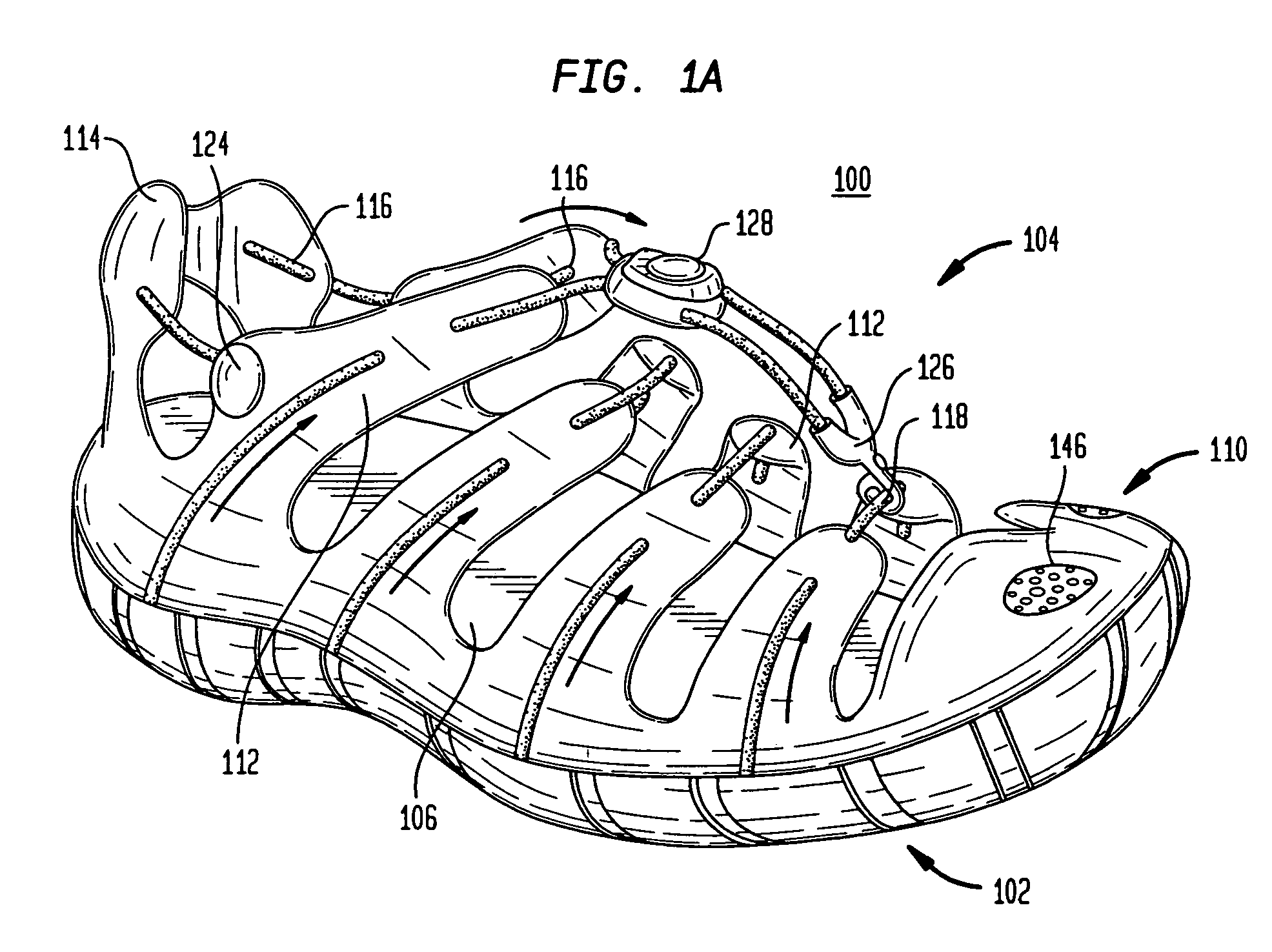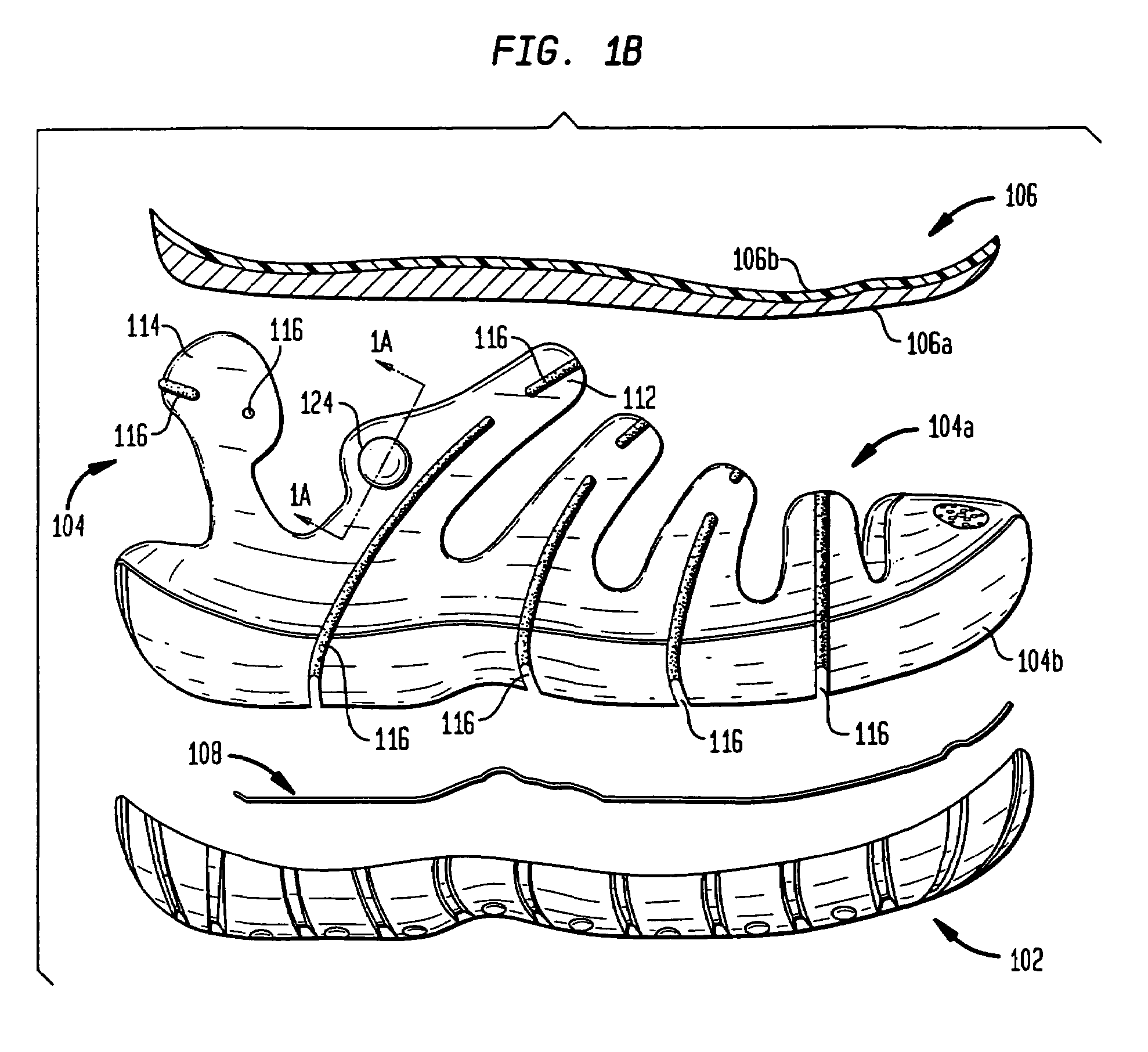Shoe with lacing
a technology of lacing and shoes, applied in the field of shoes with lacing, can solve the problems of reducing the comfort of wearing shoes, skin irritation, fungal infections or other problems, and reducing the enjoyment of water-related activities, so as to overcome the deficiencies of conventional footwear and reduce the moisture level
- Summary
- Abstract
- Description
- Claims
- Application Information
AI Technical Summary
Benefits of technology
Problems solved by technology
Method used
Image
Examples
Embodiment Construction
[0064]The foregoing aspects, features and advantages of the present invention will be further appreciated when considered with reference to the following description of preferred embodiments and accompanying drawings, wherein like reference numerals represent like elements. In describing the preferred embodiments of the invention illustrated in the appended drawings, specific terminology will be used for the sake of clarity. However, the invention is not intended to be limited to the specific terms used, and it is to be understood that each specific term includes equivalents that operate in a similar manner to accomplish a similar purpose. By way of example only, the term “footwear” is used herein to include, without limitation, all manner of foot coverings such as boots, shoes, sandals, athletic sneakers, loafers, boat shoes, wet boots, etc. The term “water shoes” includes sandals and sandal-type shoes such as slides, flips and thongs, as well as boat shoes, wet boots and other foo...
PUM
 Login to View More
Login to View More Abstract
Description
Claims
Application Information
 Login to View More
Login to View More - R&D
- Intellectual Property
- Life Sciences
- Materials
- Tech Scout
- Unparalleled Data Quality
- Higher Quality Content
- 60% Fewer Hallucinations
Browse by: Latest US Patents, China's latest patents, Technical Efficacy Thesaurus, Application Domain, Technology Topic, Popular Technical Reports.
© 2025 PatSnap. All rights reserved.Legal|Privacy policy|Modern Slavery Act Transparency Statement|Sitemap|About US| Contact US: help@patsnap.com



